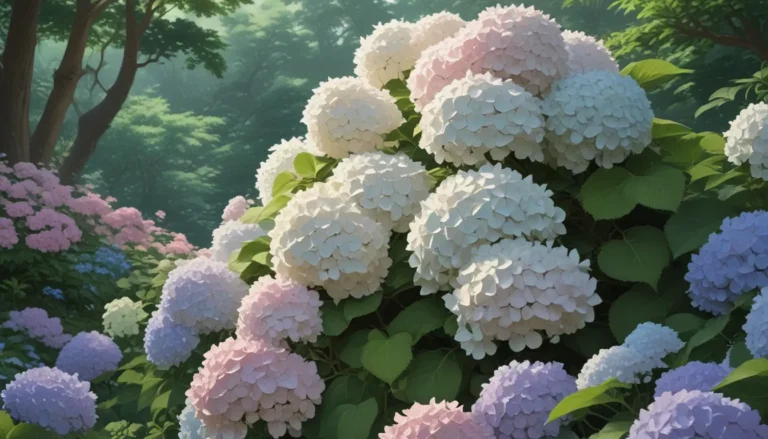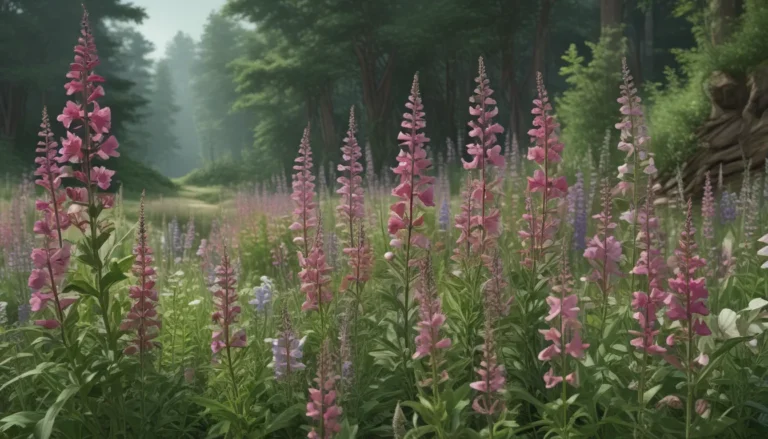10 Cool-Weather Perennials to Add Vibrant Color to Your Fall Garden
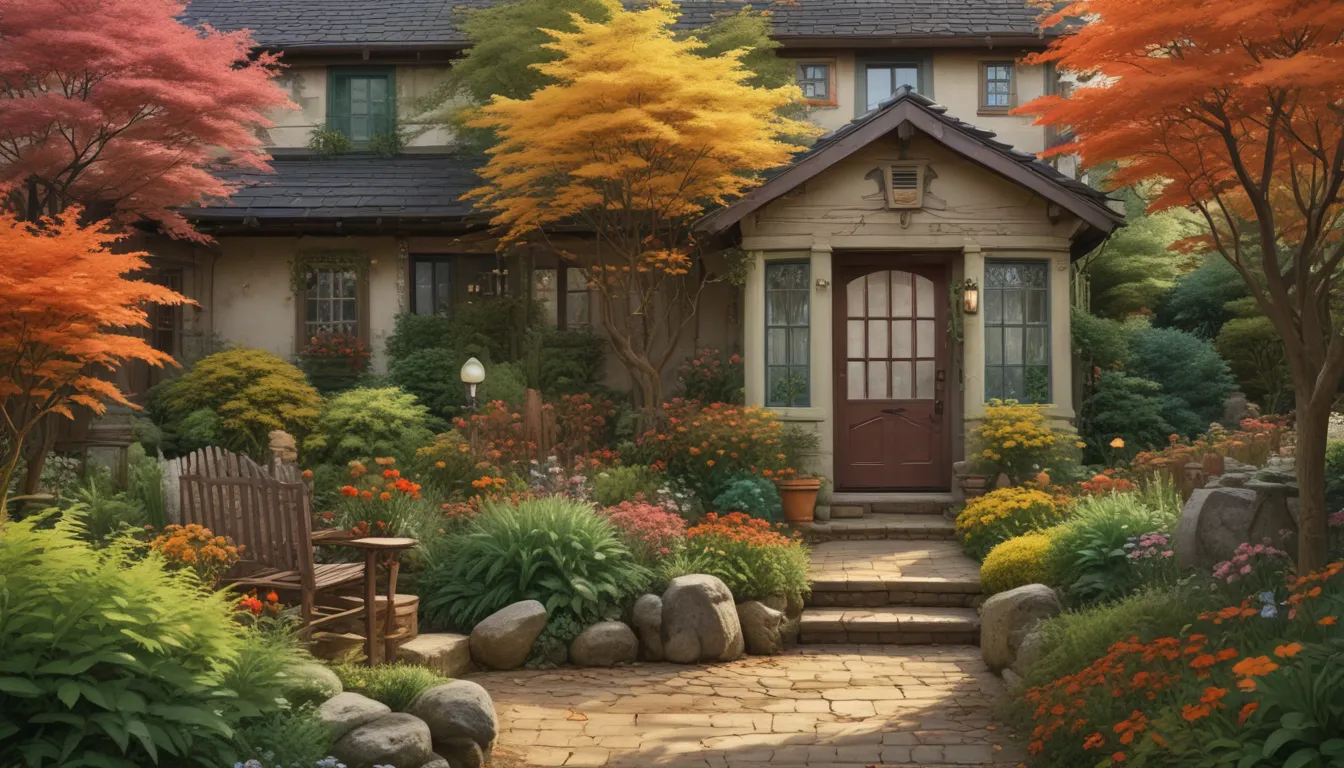
As the summer heat fades and the crisp autumn air settles in, many gardeners find themselves longing for a burst of color in their outdoor spaces. While spring and summer often steal the show when it comes to vibrant blooms, fall can be just as spectacular with the right plants in your garden. Enter cool-weather perennials – the unsung heroes of the autumn landscape.
In this guide, we’ll explore ten fantastic perennials that thrive in cooler temperatures and bring a rich palette of colors to your fall garden. These plants not only provide visual interest during the autumn months but also return year after year, making them excellent investments for any garden enthusiast.
Why Choose Cool-Weather Perennials?
Before we dive into our top 10 list, let’s talk about why cool-weather perennials are such great additions to your garden:
- Extended blooming season: These plants often start flowering in late summer and continue well into fall, giving you months of enjoyment.
- Frost tolerance: Many cool-weather perennials can withstand light frosts, extending the beauty of your garden even as temperatures drop.
- Low maintenance: Once established, most of these plants require minimal care, perfect for busy gardeners.
- Attracts pollinators: Fall-blooming perennials provide essential food sources for bees and butterflies preparing for winter.
- Complements autumn foliage: The vibrant colors of these flowers often pair beautifully with changing leaf colors in your landscape.
Now, let’s explore our top 10 picks for cool-weather perennials that will transform your fall garden into a colorful oasis.
1. Chrysanthemums (Chrysanthemum x morifolium)

No list of fall flowers would be complete without the classic chrysanthemum, often simply called “mums.” These quintessential autumn bloomers come in a wide array of colors, from bright yellows and oranges to deep purples and reds.
Key features:
- Bloom time: Late summer to fall
- Height: 1-3 feet
- Sun requirements: Full sun to partial shade
- Hardiness zones: 5-9
Chrysanthemums are incredibly versatile and can be used in various ways throughout your garden. Plant them in borders, use them as ground cover, or pot them up for a colorful porch display. To keep your mums looking their best, pinch back the growing tips in spring and early summer to encourage bushier growth and more abundant blooms.
Pro tip: Choose hardy varieties for your garden beds to ensure they return year after year. Some varieties sold as seasonal potted plants may not survive harsh winters.
2. Asters (Symphyotrichum spp.)
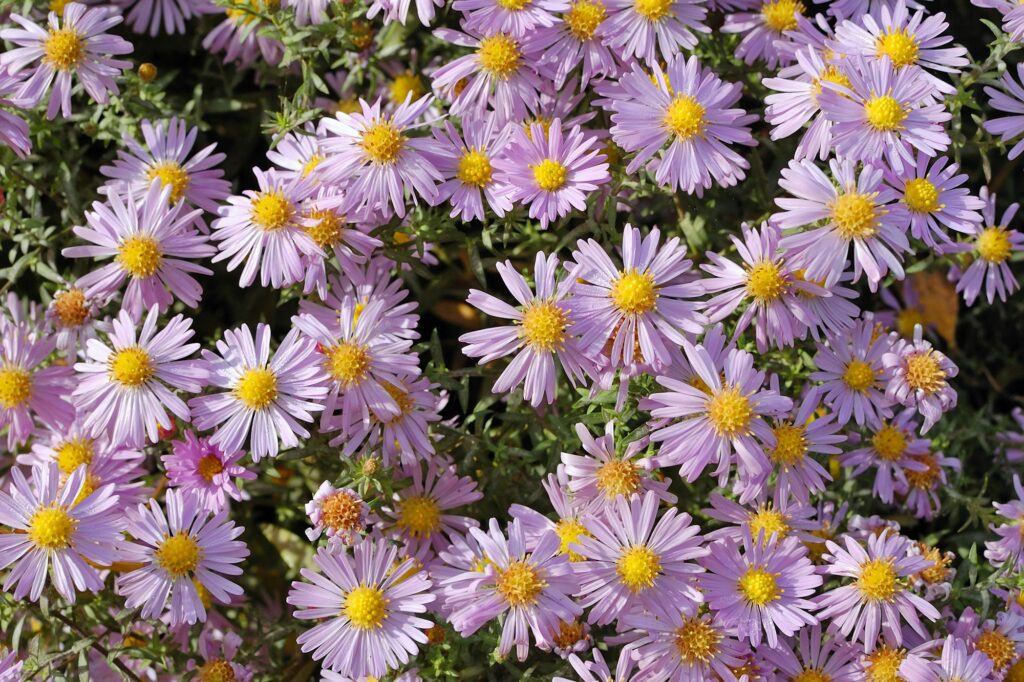
Asters are another fall garden staple, offering daisy-like flowers in shades of purple, pink, blue, and white. These hardy perennials are not only beautiful but also serve as important late-season nectar sources for pollinators.
Key features:
- Bloom time: Late summer to fall
- Height: 1-6 feet (depending on variety)
- Sun requirements: Full sun to partial shade
- Hardiness zones: 3-8
There are many species and cultivars of asters to choose from, ranging from compact border plants to tall, back-of-the-garden varieties. The New England aster (Symphyotrichum novae-angliae) and the New York aster (Symphyotrichum novi-belgii) are two popular choices for fall gardens.
To keep asters looking tidy and prevent them from flopping over, try the “Chelsea chop” technique. In late spring or early summer, cut back about half of the stems by one-third to one-half their height. This will delay blooming on the cut stems, creating a longer overall bloom period and a more compact plant.
3. Sedum ‘Autumn Joy’ (Hylotelephium ‘Herbstsfreude’)
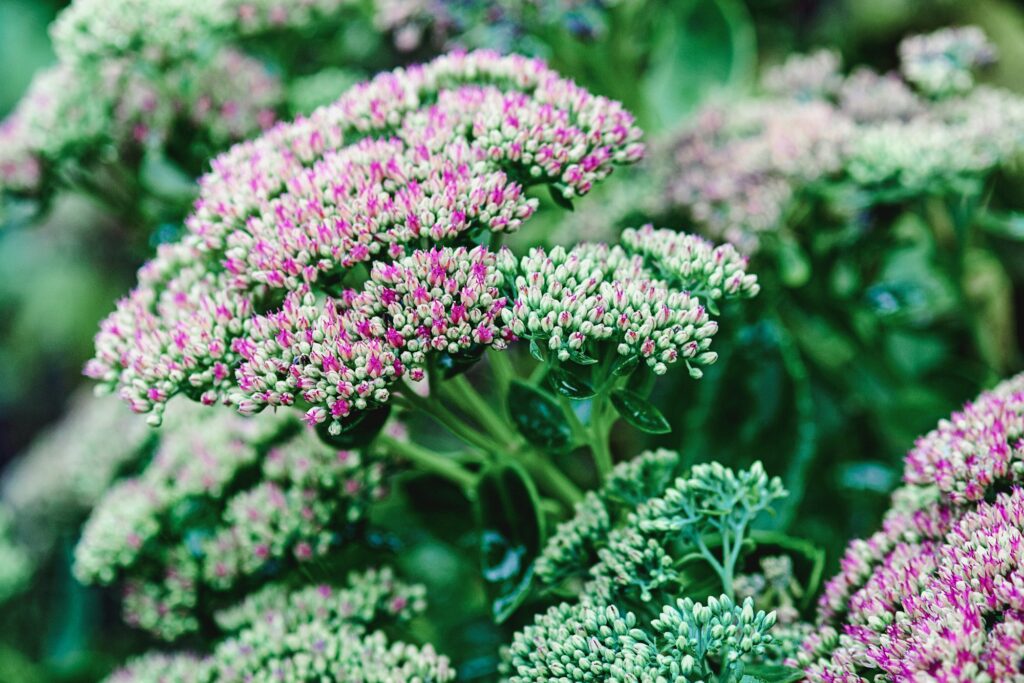
Sedum ‘Autumn Joy’, also known as stonecrop, is a succulent perennial that provides interest from summer through late fall. Its flower heads start as pale pink buds, open to a deeper rose color, and finally mature to a rich copper-red.
Key features:
- Bloom time: Late summer to fall
- Height: 18-24 inches
- Sun requirements: Full sun
- Hardiness zones: 3-9
This drought-tolerant plant is perfect for rock gardens, borders, or as a specimen plant. Its thick, fleshy leaves add textural interest even when the plant isn’t in bloom. ‘Autumn Joy’ is particularly low-maintenance and resistant to deer and rabbits.
To promote bushier growth and prevent flopping, you can pinch back the stems by about one-third in late spring or early summer. This will delay blooming slightly but result in a more compact plant with more numerous flower heads.
4. Japanese Anemone (Anemone x hybrida)

Japanese anemones bring elegance to the fall garden with their delicate, poppy-like flowers bobbing atop tall, wiry stems. These graceful perennials come in shades of pink and white, adding a touch of refinement to autumn borders.
Key features:
- Bloom time: Late summer to fall
- Height: 2-4 feet
- Sun requirements: Partial shade to full sun
- Hardiness zones: 4-8
Japanese anemones prefer rich, moist soil but can adapt to a variety of conditions once established. They’re excellent for adding height and movement to the back of a border or for brightening up partially shaded areas.
Word of caution: While beautiful, Japanese anemones can spread aggressively in ideal conditions. Plant them where they have room to naturalize or be prepared to control their spread.
5. Helenium (Helenium autumnale)
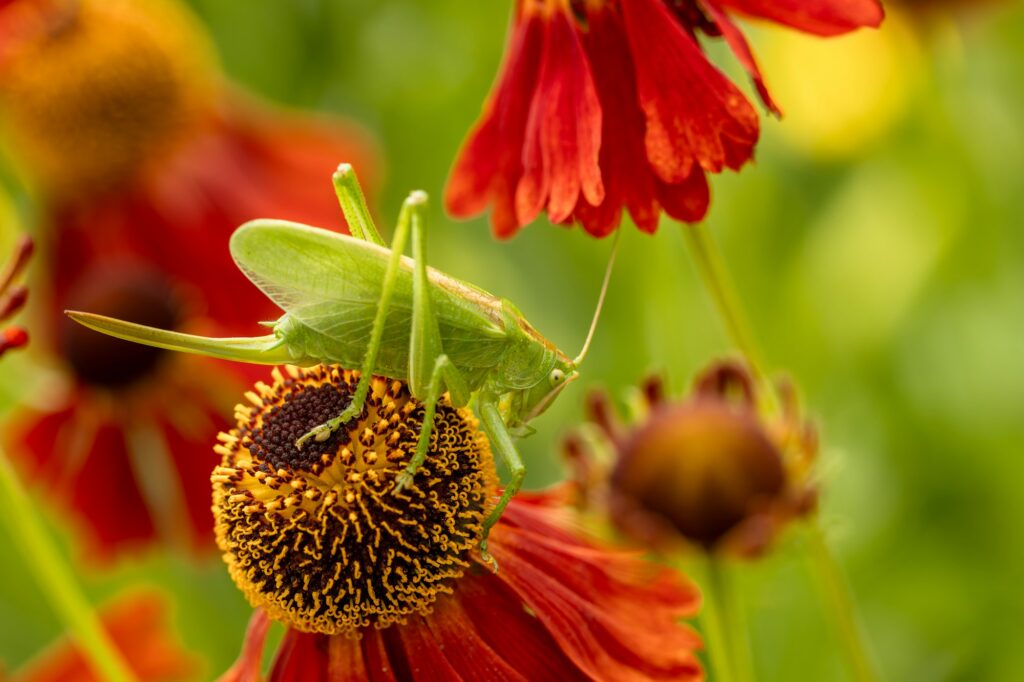
Often called “sneezeweed” (though it doesn’t cause allergies), Helenium is a native North American perennial that brings warm, autumnal colors to the garden. Its daisy-like flowers come in shades of yellow, orange, and red, often with darker centers.
Key features:
- Bloom time: Late summer to fall
- Height: 3-5 feet
- Sun requirements: Full sun
- Hardiness zones: 3-8
Helenium is a great choice for adding height to the back of a border or for creating a meadow-like effect in larger spaces. It pairs beautifully with ornamental grasses and other late-season bloomers.
To encourage bushier growth and more flowers, pinch back the growing tips in late spring. This will also help prevent the tall stems from flopping over. Helenium appreciates consistent moisture, so water deeply during dry spells to keep it looking its best.
6. Russian Sage (Perovskia atriplicifolia)
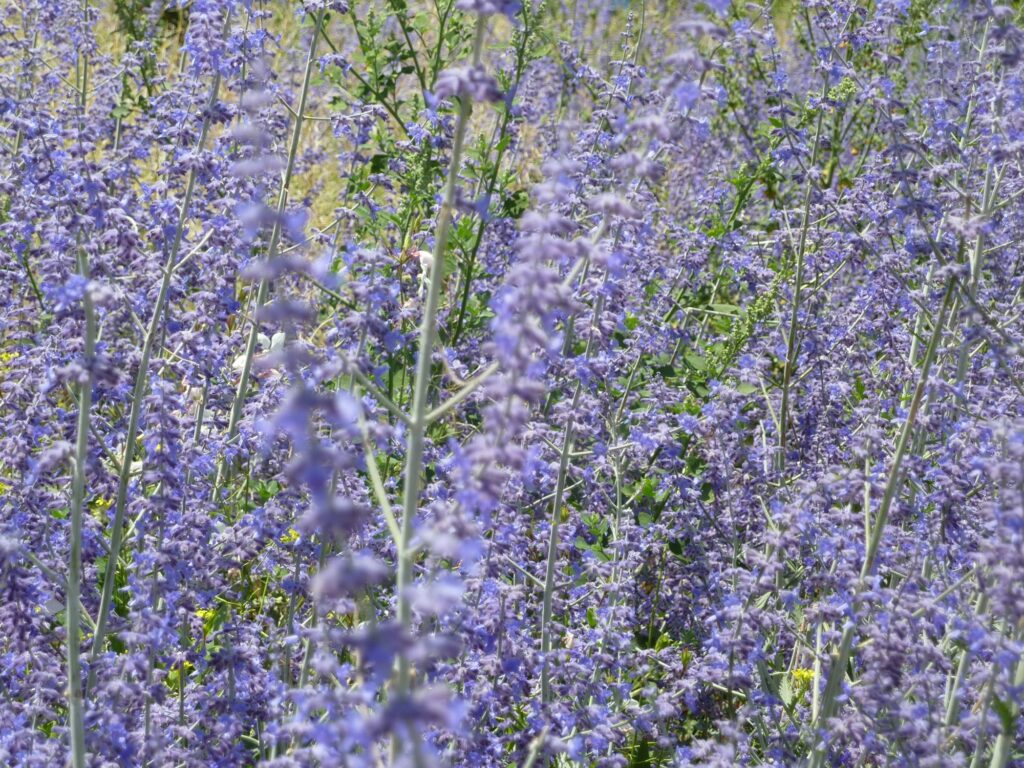
Russian sage isn’t a true sage, but this woody perennial offers a similar aromatic foliage and a cloud-like mass of lavender-blue flowers that persist well into fall. Its silver-gray leaves provide a beautiful contrast to other fall colors in the garden.
Key features:
- Bloom time: Summer to fall
- Height: 3-5 feet
- Sun requirements: Full sun
- Hardiness zones: 4-9
Drought-tolerant and deer-resistant, Russian sage is an excellent choice for low-maintenance gardens or xeriscaping. It pairs well with other sun-loving, drought-tolerant plants like sedum and ornamental grasses.
For a neater appearance and to prevent sprawling, cut Russian sage back to about 6 inches above the ground in early spring before new growth begins. You can also divide the plants every 4-6 years in spring to maintain vigor and control their size.
7. Coneflower (Echinacea spp.)
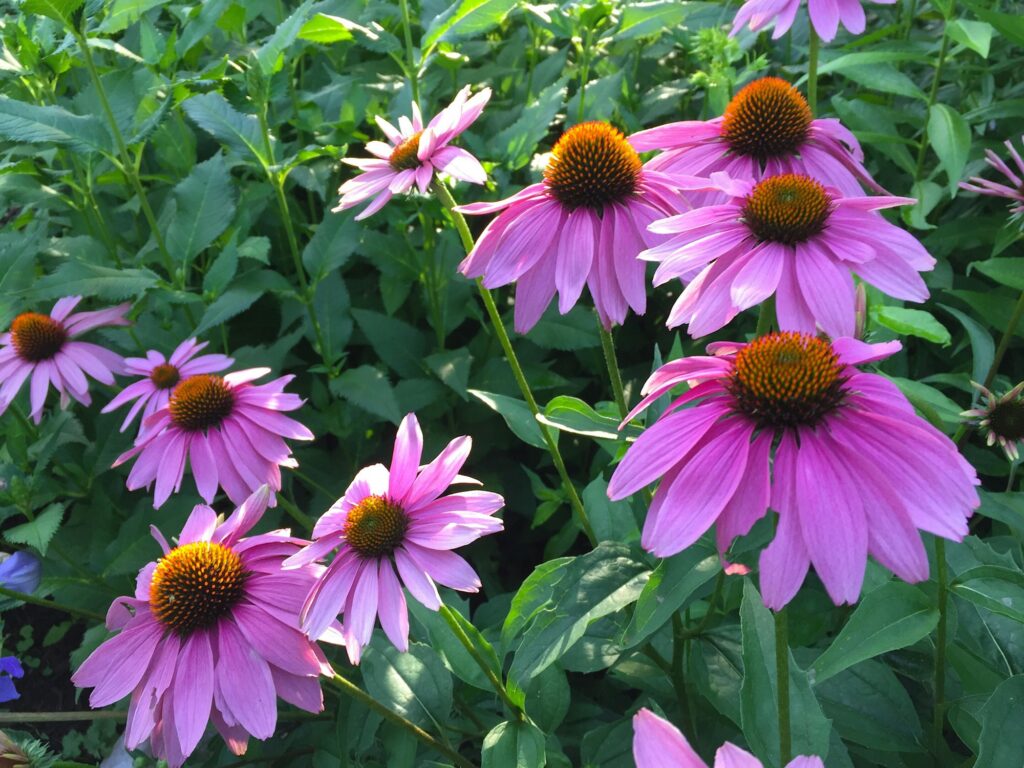
While coneflowers start blooming in summer, many varieties continue to produce flowers well into fall, providing long-lasting color and attractive seed heads that persist through winter. These native North American plants come in a range of colors, from the classic purple to white, yellow, orange, and even green.
Key features:
- Bloom time: Summer to fall
- Height: 2-4 feet
- Sun requirements: Full sun to partial shade
- Hardiness zones: 3-9
Coneflowers are not only beautiful but also highly beneficial for wildlife. Their nectar attracts butterflies and bees, while their seeds provide food for birds in winter. They’re drought-tolerant once established and make excellent cut flowers.
To extend the blooming period, deadhead spent flowers regularly. However, towards the end of the season, leave some seed heads in place for winter interest and to feed birds. Divide coneflowers every 3-4 years in spring to maintain plant health and control their spread.
8. Goldenrod (Solidago spp.)

Often unfairly blamed for hay fever (the real culprit is usually ragweed), goldenrod is a valuable late-season perennial that deserves a place in fall gardens. Its bright yellow plumes add a cheerful touch to autumn landscapes and provide an important nectar source for pollinators.
Key features:
- Bloom time: Late summer to fall
- Height: 1-6 feet (depending on variety)
- Sun requirements: Full sun to partial shade
- Hardiness zones: 3-9
There are many species and cultivars of goldenrod to choose from, ranging from compact border plants to tall meadow varieties. Some popular garden varieties include ‘Fireworks’, ‘Golden Fleece’, and ‘Little Lemon’.
To keep goldenrod from spreading too aggressively, choose clump-forming varieties and divide them every 3-4 years in spring. Pinching back the growing tips in late spring can help create bushier plants with more flower stems.
9. Toad Lily (Tricyrtis spp.)
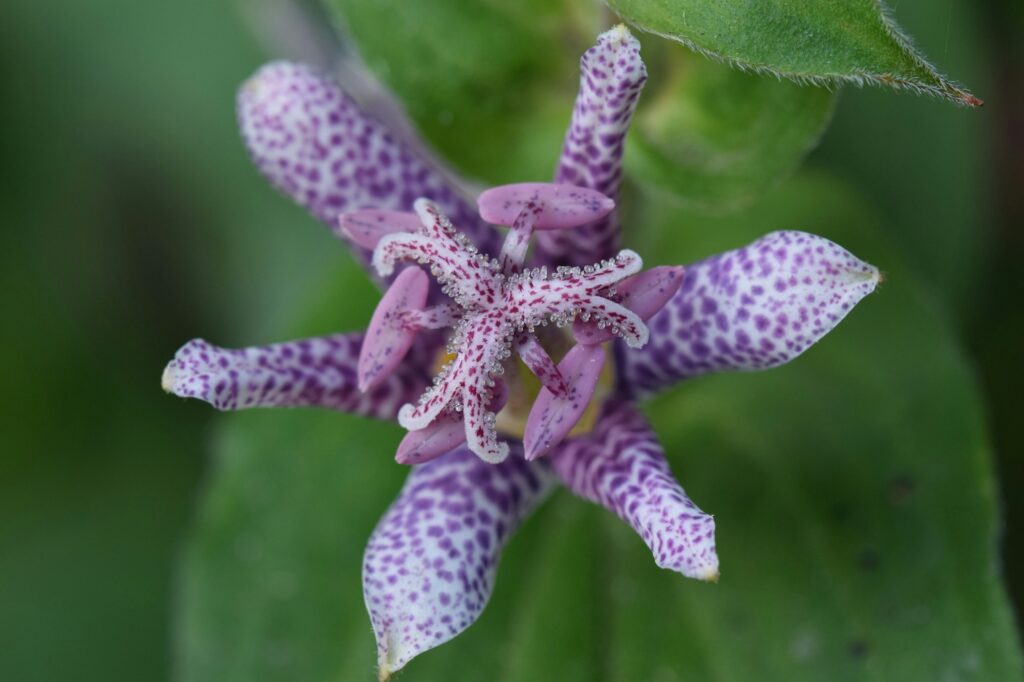
For gardeners looking to add something unique to their fall garden, toad lilies are an excellent choice. These shade-loving perennials produce orchid-like flowers speckled with purple or pink, adding an exotic touch to woodland gardens or shaded borders.
Key features:
- Bloom time: Late summer to fall
- Height: 2-3 feet
- Sun requirements: Partial to full shade
- Hardiness zones: 4-8
Toad lilies prefer rich, moist soil and are perfect for brightening up shaded areas of the garden where other fall bloomers might struggle. Their arching stems and unusual flowers make them great companions for ferns, hostas, and other shade-loving plants.
To encourage bushier growth, pinch back the growing tips in late spring. Mulch around the plants to help retain moisture and protect the roots from winter damage in colder regions.
10. Autumn Crocus (Colchicum autumnale)
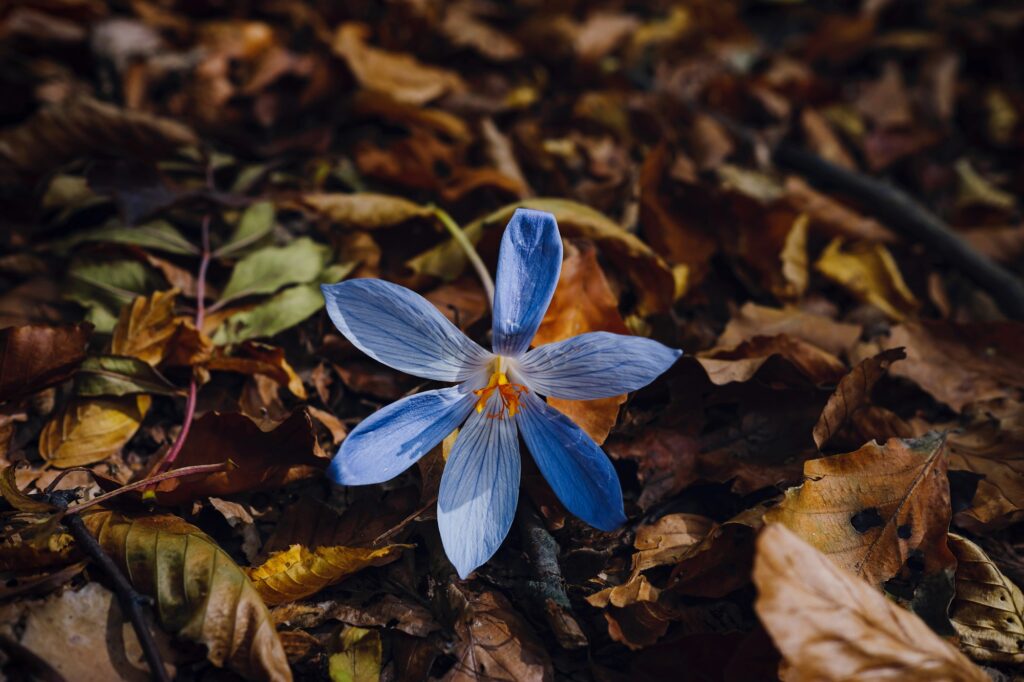
Despite its common name, the autumn crocus isn’t actually a crocus at all, but a member of the lily family. These unique plants produce large, goblet-shaped flowers in shades of pink, purple, or white in early to mid-fall, often before their leaves appear.
Key features:
- Bloom time: Early to mid-fall
- Height: 4-6 inches (flowers), 12-18 inches (foliage)
- Sun requirements: Full sun to partial shade
- Hardiness zones: 4-9
Autumn crocuses are perfect for adding unexpected color to the fall garden. Plant them in groups for the best effect, either in borders or naturalized in lawns or woodland areas. Their foliage appears in spring and dies back by midsummer, so pair them with plants that can fill in the space during summer months.
Important note: All parts of the autumn crocus are toxic if ingested, so use caution when planting if you have children or pets.
Tips for Success with Cool-Weather Perennials
To ensure your fall-blooming perennials thrive and provide maximum color, keep these tips in mind:
- Plant early: For best results, plant cool-weather perennials in spring or early summer. This gives them time to establish strong root systems before they need to bloom.
- Provide proper care: While many of these plants are low-maintenance, they still need appropriate watering, especially during their first year. Mulch around the plants to retain moisture and suppress weeds.
- Deadhead regularly: Remove spent blooms to encourage continued flowering and keep plants looking tidy.
- Plan for winter: In colder regions, apply a layer of mulch around plants after the ground freezes to protect roots from winter damage.
- Divide when necessary: Most perennials benefit from division every few years to maintain vigor and prevent overcrowding.
Creating a Colorful Fall Garden Design
When incorporating these cool-weather perennials into your garden, consider the following design tips:
- Layer your plantings: Use taller plants like Russian sage and goldenrod at the back of borders, medium-height plants like asters and coneflowers in the middle, and shorter plants like autumn crocus in the front.
- Consider color combinations: Plan your color scheme to complement or contrast with autumn foliage. For example, pair the purple flowers of asters with the yellow of goldenrod, or echo the warm tones of changing leaves with the coppery heads of sedum.
- Add texture: Incorporate plants with different leaf shapes and flower forms to create visual interest. The lacy foliage of Russian sage, for instance, contrasts beautifully with the broad leaves of autumn crocus.
- Include non-flowering elements: Enhance your fall garden with ornamental grasses, colorful foliage plants, and interesting hardscape elements like decorative stones or garden art.
- Plan for continuous bloom: Stagger plants with different bloom times to ensure color throughout the season. For example, coneflowers and Russian sage can provide color in late summer, followed by asters and chrysanthemums in mid to late fall.
By incorporating these cool-weather perennials and following these design tips, you can create a fall garden that rivals the beauty of spring and summer displays. Not only will you extend the colorful season in your outdoor space, but you’ll also provide valuable resources for pollinators and create a landscape that’s full of interest well into the cooler months.
Remember, gardening is an ongoing process of learning and experimentation. Don’t be afraid to try new plant combinations or move things around if they’re not thriving in their current location. With time and attention, your fall garden will become a stunning showcase of autumn’s vibrant beauty, providing you with a colorful and rewarding outdoor space to enjoy as the days grow shorter and cooler.
